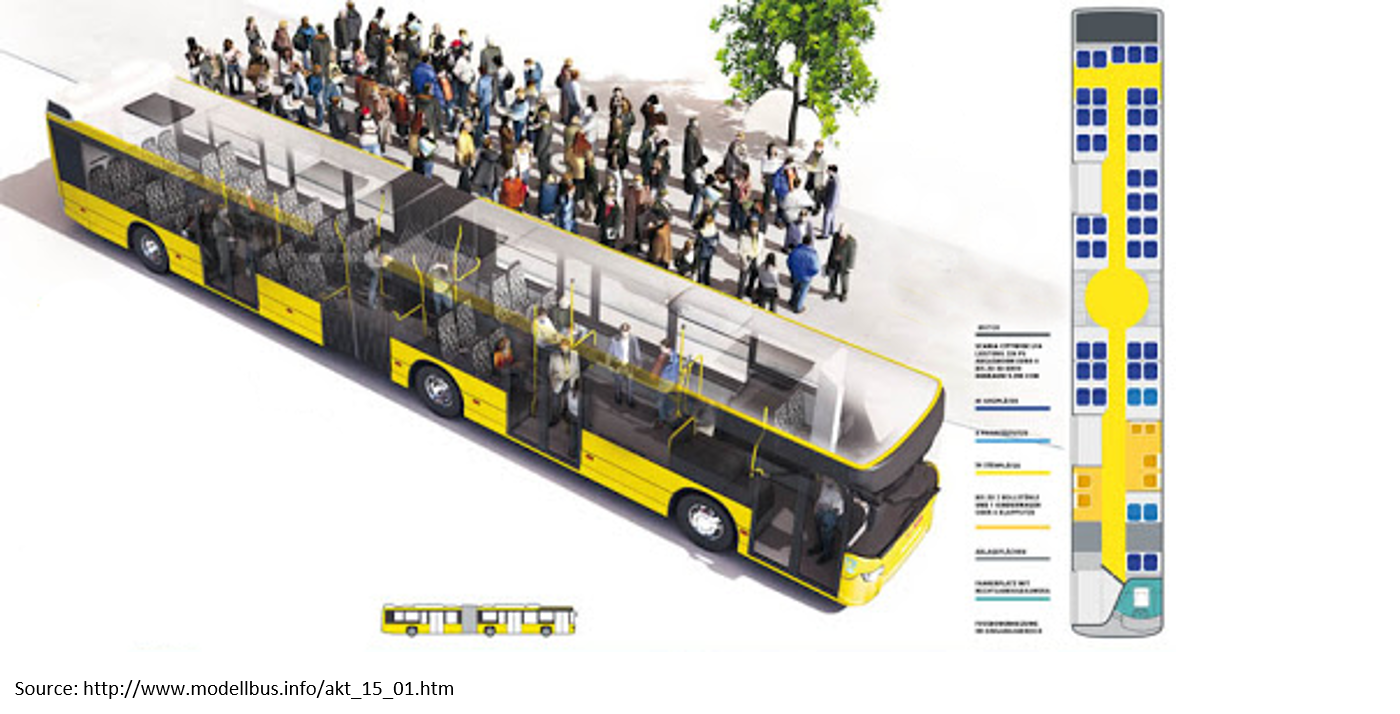Ideas Lab
Stowing shopping or luggage on public transport buses for everyday journeys
CATHLEEN SCHöNE
I am a convinced user of public transport, but every now and then there are situations in which the equipment/design of the vehicles makes me despair and awakens in me the desire for a car. This is especially true in situations where I am traveling with larger shopping bags or luggage. I am aware that the appearance and features of public transport vehicles can vary greatly from country to country. Therefore, I am attaching a picture showing a type of bus that is commonly used in my region. A good overview of other bus types including photos can be found at this link http://www.bimmelbus-leipzig.de/.
As you can see, the largest clearances are in the area of the doors and in the middle of the bus. In between are the rows of seats connected by a narrow aisle. When I am travelling with several shopping bags or even luggage, I always wait slightly anxiously at the bus stop, hoping for a halfway empty bus so that I can stand in the open spaces with my bags/luggage. Why? Because anything else quickly degenerates into work and likes to make fellow passengers grumble.
Problem:
- The aisle is too narrow. If you squeeze through with your shopping bags, you either hit yourself or another passenger in front of the leg or shoulder.
- The distances between the rows of seats are too narrow. A shopping bag just fits in front of the feet - a suitcase definitely does not. The second shopping bag would have to be placed on the lap. That is not physically feasible for everyone. And when it's raining or snowing, you don't want to put the wet and dirty bags on your clothes.
- Should you still risk taking a seat with a shopping bag in front of your feet and one on your lap, it becomes difficult as soon as another passenger sits down next to you. Either the person sitting next to you wants to get off and you have to let them pass and stand up to do so, or you are the one who has to stand up and be let past. Both require advance warning and space and time to execute, and cost both passengers (as well as others who may be crowded in the aisle and have to move together) nerves.
- And even if you're lucky enough to be standing in the clearances, you have to put the grocery bags between your legs to keep them from tipping over or leave them in your hands if necessary, which can take quite a bit of strength on a long ride. Both are especially difficult when standing in the middle of the bus, as there the floor resembles a roundabout and turns under the feet, so that the bus can turn into a curve. Putting bags down becomes a problem, but so does holding them in your hand, since you also have to hold on to something.
Approaches for a design solution:
- Ideas for existing vehicles - how could the open spaces be used and equipped so that the problems described can be solved.
- Ideas for new vehicles - how could future buses be designed so that the problems described can be solved?
First considerations:
- Provide stowage facilities in the open spaces - e.g. rubber bands along the bottom of the bus wall into which shopping bags can be clamped. This allows people to safely place their shopping bags and find a seat without having to squeeze the shopping bags across the bus.
- Install devices in the free spaces to securely fix suitcases or shopping trolleys (similar to holders for bicycles).
- Possibly create storage spaces under seats so that shopping bags cannot tip over backwards, forwards or sideways.
- Design special areas for the organised storage of shopping bags, suitcases etc. in buses (clearly visible for all passengers, easily accessible).

